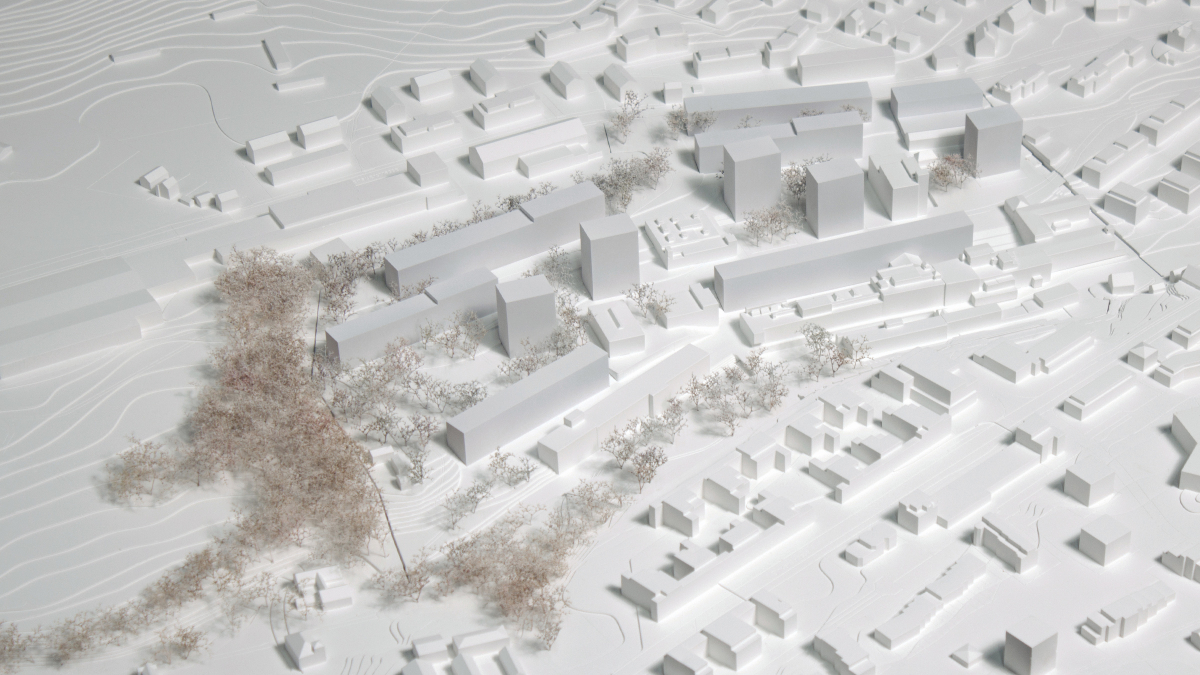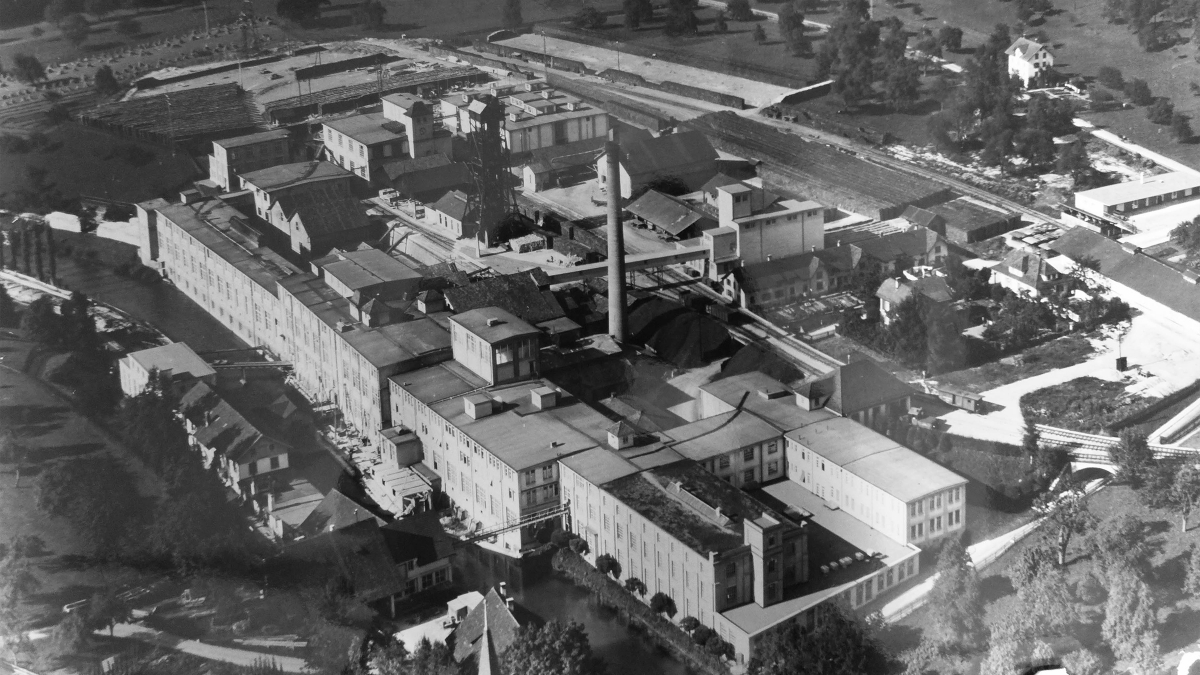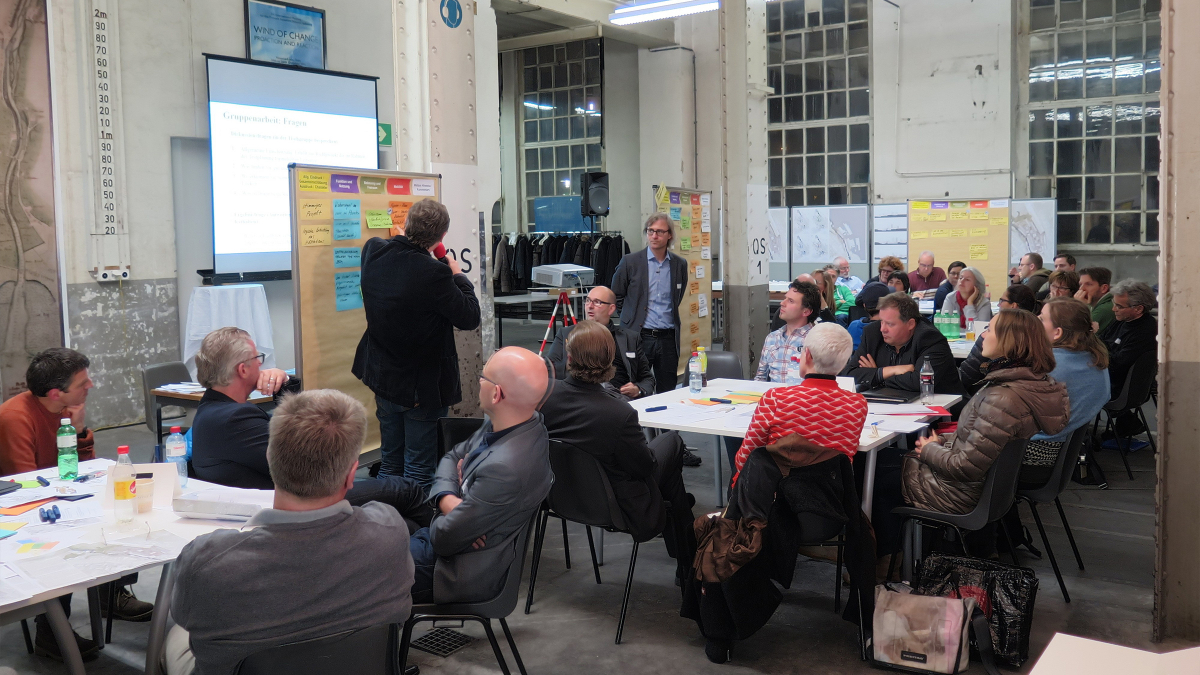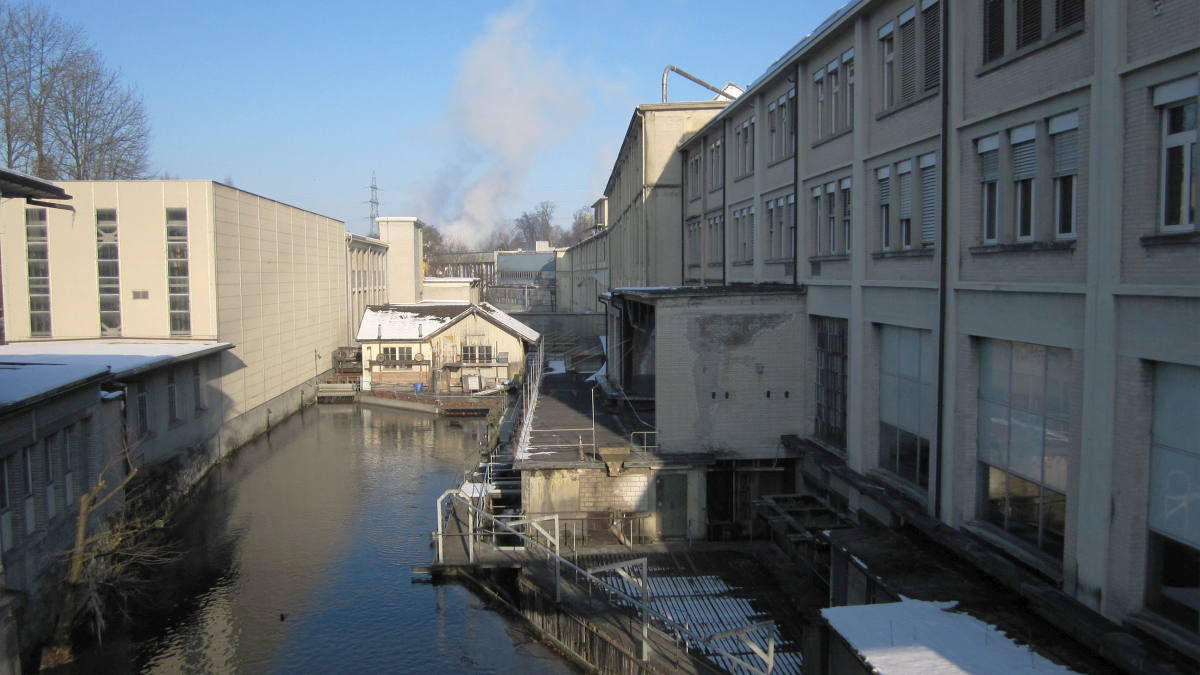"Papieri" in Cham: from industrial site to vibrant district
Not long ago, the 30-acre "Papieri" industrial site in Cham was home to a paper production factory. The site is now to be developed into a mixed residential and commercial district that was planned by the site owner and the municipality in close consultation with local residents. EBP has played a supporting role throughout the process, helping the project’s stakeholders to identify the goal, draft the masterplan and obtain the necessary authorization for the project’s implementation.
When the Cham Paper Group proposed to redevelop its factory site after moving its paper production to Italy, the prevailing response from the municipality was that redevelopment would be very welcome, but only if the municipality officials and residents were included in the planning process. After all, an important chapter in the Canton of Zug’s industrial history had essentially come to an end.
The property owner and municipality representatives therefore agreed to work out a development concept for the former industrial site in the context of a process that included significant participation on the part of Cham’s residents. This concept then served as a basis for the completion of all subsequent planning phases – from the site design-and-development competition to the drafting of a development proposal and a final development plan. The project was approved by the citizens of Cham in a referendum held at the end of September 2016.
The task of harmonizing divergent interests
The first step was to develop a common vision for the new district. While a consensus was quickly reached on the goal of transforming the industrial site into a vibrant residential and commercial district, many of the more detailed issues were in need of clarification. For instance, was the new housing supposed to accommodate the needs of middle-income families or were more affordable units also to be built for low-income individuals? What type of businesses should be considered? And to what extent should energy-efficiency and environmentally-friendly transportation play a role in the project? Reaching a balance here could not have been easier, since the stakeholders showed a good measure of flexibility, the external moderation was well-focused and we were able bring our experience with both public agencies and real-estate developers to bear. And once the surveys were completed and the various interests were reconciled, we converted the results into a set of guidelines for the site’s development.
Managing site redevelopment from concept to realization
Cham residents seize opportunity to join the planning process
One main objective, of course, was to reach a high level of acceptance among Cham’s residents for the project. From former factory workers to environmentalists, all interested Cham residents were given an opportunity to present their ideas at various workshops. Around 60 participants eagerly discussed the guidelines developed by the Municipal Council and the Cham Paper Group and formulated their own demands for the site’s development. Many suggestions were made in regard to various topics, including mixed-use development, recreational space, public-transportation links, utilization potential, energy efficiency, landmark preservation and interim usage. EBP made sure that these suggestions were taken account of as early as the design competition stage. In this test-planning phase, four planning teams developed different urban-development solutions for the future use of the industrial site, solutions that were to accommodate the various demands and interests. Working together with the selected planning team, consisting of Albi Nussbaumer Architekten, Boltshauser Architekten and Appert Zwahlen Partner AG Landschaftsarchitektur BSLA, EBP then drafted an official development proposal and a masterplan based on the winning design submission. And once again, Cham’s residents were given an opportunity to express their views about the proposal in the context of a public forum.
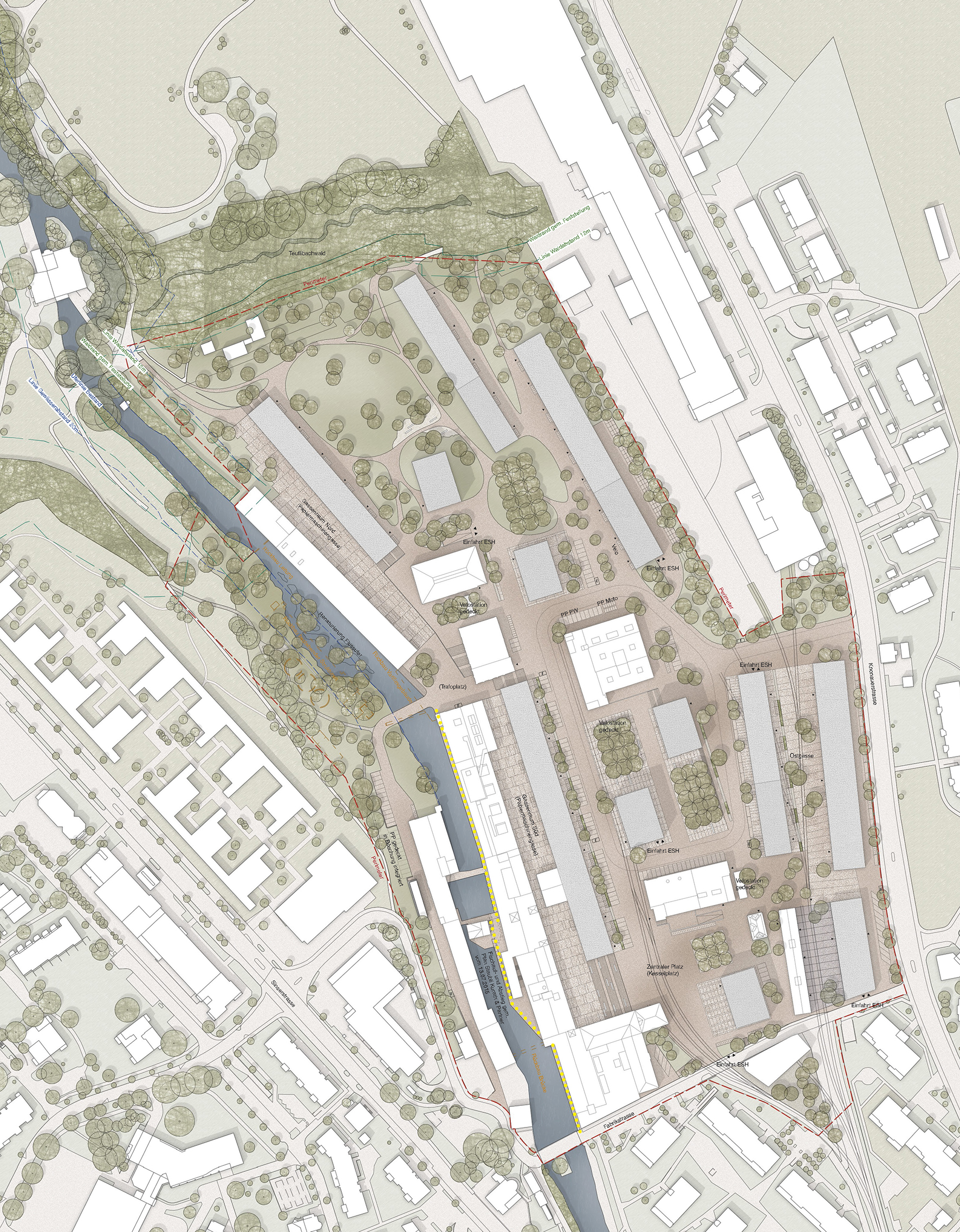
The right level of generality
Although the procedure was met by a favorable response from all participants, the fact that plans were described at a higher level of generality was problematic. It was often necessary to arrive at intuitive ways of showing how planning processes for development sites operate and what the goals of specific steps were. In particular, it was important to take account of the fact that the site was to be developed over the course of 15 to 20 years and that public policies and conditions on the real-estate market were therefore subject to a considerable degree of change. Such changes can make rigid specifications less helpful when the goal is organic development.
Development plan approved by Cham’s residents
Today, a good four years after the start of the planning process, we have taken an important step in the right direction. Cham’s residents approved the development plan and a building-code and zoning-plan revision in a referendum in the fall of 2016. And now that the Zug Cantonal Council has ratified the plan, all of the legal prerequisites have been met for the new “Papieri Residential and Commercial Zone” and the planning of individual buildings can begin. It will now take a while before the first excavators show up. Until then, the site is available for all kinds of interim uses.
Overview of project roles and participants
- Clients: Municipality of Cham and Cham Paper Group
- Development proposal: Albi Nussbaumer Architekten, Boltshauser Architekten, Appert Zwahlen Partner AG Landschaftsarchitektur BSLA
- External moderation and process management: Fritz Schumacher, former Chief Architect of the Canton of Basel-Stadt
- Public participation: Michael Emmenegger
- Drafting of guidelines and management of design competition (test planning): EBP
- Masterplan, development plan, revision of zoning plan / development proposal: EBP
- Process design and project management: EBP
- Expert reviews: various planners
The project leader:
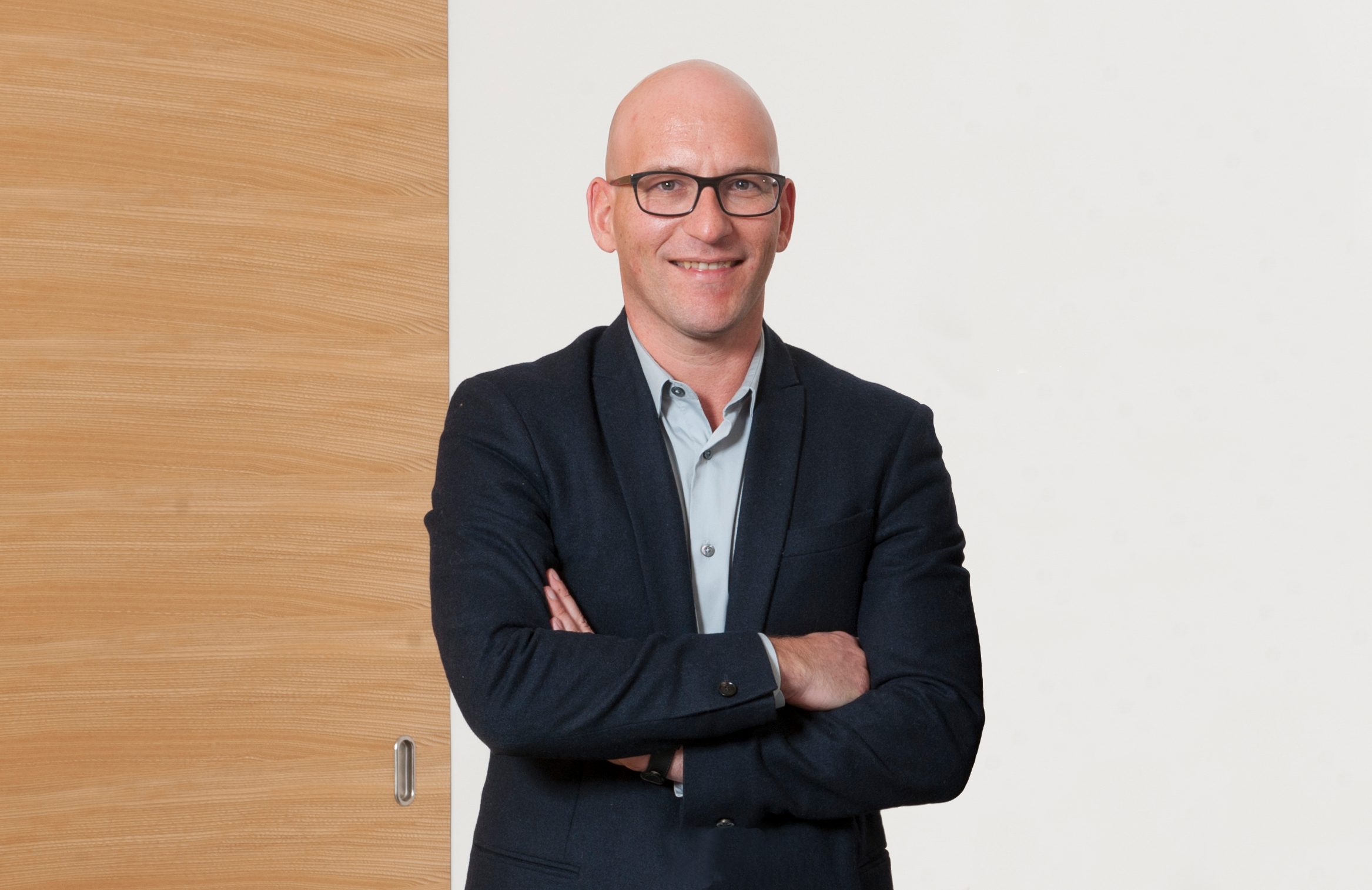
When working on projects like the Papieri Redevelopment Project, Matthias Thoma is especially motivated to discover the right solutions at the intersection of public and private interests. In his free time, he finds inspiration and balance in visiting cities and hiking.
